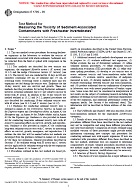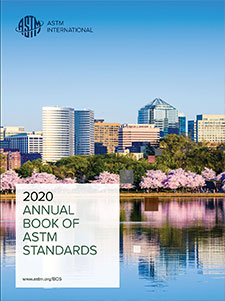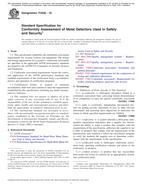
ASTM E1706-00
1.1 This test method covers procedures for testing freshwater organisms in the laboratory to evaluate the toxicity of contaminants associated with whole sediments. Sediments may be collected from the field or spiked with compounds in the laboratory.
1.1.1 Test methods are described for two toxicity test organisms, the amphipod Hyalella azteca ( H. azteca) (see13.1.2) and the midge Chironomus tentans (C. tentans) (see 14.1.2). The toxicity tests are conducted for 10 days in 300-mL chambers containing 100 mL of sediment and 175 mL of overlying water. Overlying water is renewed daily and test organisms are fed during the toxicity tests. Endpoints for the 10-day toxicity tests are survival and growth. These test methods describe procedures for testing freshwater sediments; however, estuarine sediments (up to 15 ppt salinity) can also be tested with H. azteca. In addition to the 10-day toxicity test method outlined in 13.1.2 and 14.1.2, general procedures are also described for conducting 10-day sediment toxicity tests with H. azteca (see 13.1.2) and C. tentans(see 14.1.2).
1.1.2 Guidance for conducting sediment toxicity tests is outlined in Annex A1 for Chironomus riparius, in Annex A2 for Daphnia magna and Ceriodaphnia dubia, in Annex A3 for Hexagenia spp., in Annex A4 for Tubifex tubifex, and in Annex A5 for the Diporeia spp. Guidance is also provided in for conducting long-term sediment toxicity tests with H. azteca by measuring effects on survival, growth, and reproduction. Guidance is also provided in Annex A6 for conducting long-term sediment toxicity tests with C. tentans by measuring effects on survival, growth, emergence, and reproduction. 1.6 outlines the data that will be needed before test methods are developed from the guidance outlined in Annex A1 to Annex A7 for these test organisms. General procedures described in Sections 17 for sediment testing with H. azteca and C. tentans are also applicable for sediment testing with the test organisms described in Annex A1 to Annex A7.
1.2 Procedures outlined in this test method are based primarily on procedures described in the United States Environmental Protection Agency (USEPA) (1-8 ) and Guides E1367, E1391, E1525 and E1688.
1.3 Additional research and methods development are now in progress to: (1) evaluate additional test organisms, (2) further evaluate the use of formulated sediment, (3) refine sediment dilution procedures, (4) refine sediment toxicity identification evaluation (TIE) procedures (9), (5) refine sediment spiking procedures, (6) develop in situ toxicity tests to assess sediment toxicity and bioaccumulation under field conditions, (7) evaluate relative sensitivities of endpoints measured in tests, (8) develop methods for new species, (9) evaluate relationships between toxicity and bioaccumulation, and (10) produce additional data on confirmation of responses in laboratory tests with natural populations of benthic organisms. Some issues that may be considered in interpretation of test results are the subject of continuing research including the influence of feeding on bioavailability, nutritional requirements of the test organisms, and additional performance criteria for organism health. See Section 6 for additional detail. This information will be described in future editions of this standard.
1.4 The USEPA (1) and Guide E1688 also describes 28-day bioaccumulation methods for the oligochaete Lumbriculus variegatus.
1.5 Results of tests, even those with the same species, using procedures different from those described in the test method may not be comparable and using these different procedures may alter bioavailability. Comparison of results obtained using modified versions of these procedures might provide useful information concerning new concepts and procedures for conducting sediment tests with aquatic organisms. If tests are conducted with procedures different from those described in this test method, additional tests are required to determine comparability of results. General procedures described in this test method might be useful for conducting tests with other aquatic organisms; however, modifications may be necessary.
NOTE: This page does not contain the complete scope (sections 1.6 through 1.9). To see scope in it’s entirety please refer to the standard.
Product Details
- Published:
- 04/10/2000
- Number of Pages:
- 117
- File Size:
- 1 file , 1.2 MB

